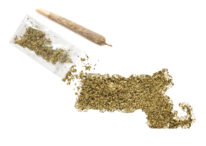As five states address the question of legalizing recreational marijuana on November 8th, medical professionals are concerned about an aspect of legalized pot that is rarely discussed.
While many adults view marijuana as an innocuous recreational alternative to alcohol, there is another adult demographic that will be impacted by legal and easy-to-obtain marijuana.
Many people who suffer from a variety of medical conditions have been frustrated by treatment options for pain, nausea and other chronic ailments. In many cases, more traditional medications do not provide relief, and opioid-based pain relief has been shown to be dangerously addictive. In states which have enacted legal medical marijuana measures, people undergoing chemotherapy or suffering from chronic pain and a variety of conditions can look to medical marijuana as an alternative source of relief. However, there are strict guidelines to obtaining medical marijuana.
The patient needs to be evaluated by a physician as part of the process.
The physician evaluates the patient’s condition, and determines if marijuana is likely to be a good treatment for their specific situation. The physician will examine the patient, prescribe medical marijuana if indicated, and then will continue to monitor the patient as they begin their treatment. The physician is required to continue to see and monitor the patient over time, ensuring that the treatment is helpful in alleviating symptoms. He or she continues consulting with the patient during treatment, reviewing optimal doses and strains to address their specific needs.
A seldom-discussed aspect of legal, recreational marijuana is the prospect of those suffering from medical conditions essentially self-medicating with marijuana. This could lead to self-dosing that does not work well for the patient’s specific needs, and divert time and attention away from other treatments potentially better suited to that individual’s needs. Even if marijuana is a viable treatment for that person, with easily obtained legal recreational marijuana, there would be no one to monitor and consult with regarding best strains or optimal doses.
Voters in California, Arizona, Nevada, Maine and Massachusetts will have adult recreational marijuana measure on the ballot this election day. When recreational marijuana is legal, what happens to medical marijuana? Will those suffering from chemotherapy-induced nausea, MS, glaucoma, seizures, arthritis and other conditions take the time to be medically evaluated, or rush to self-treatment with legal recreational pot? Will the legal weed store’s “budtender” know which of the many strains are best for which specific ailments, or just what type of “high” to expect from each?
Research has shown that marijuana can be used effectively to help a variety of conditions, but self-medicating is never the best choice. Under a doctor’s care and guidance, medical marijuana can help many patients, but without such expert supervision, marijuana could be nothing more than an expensive diversion from appropriate treatment.
